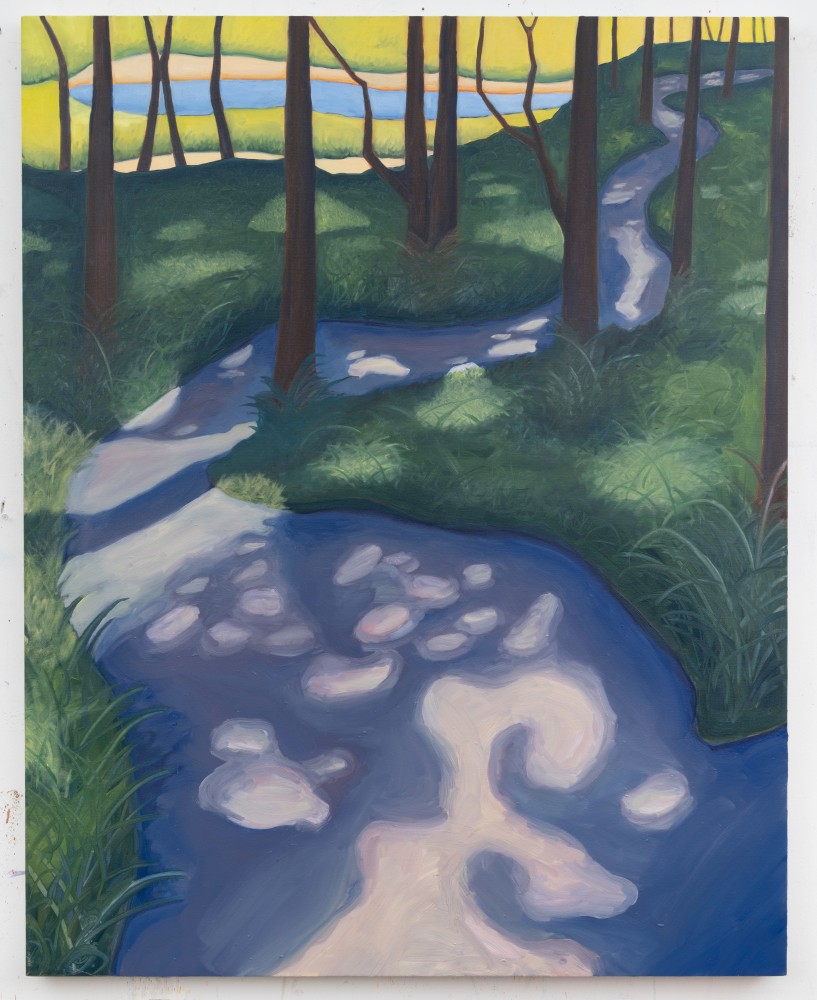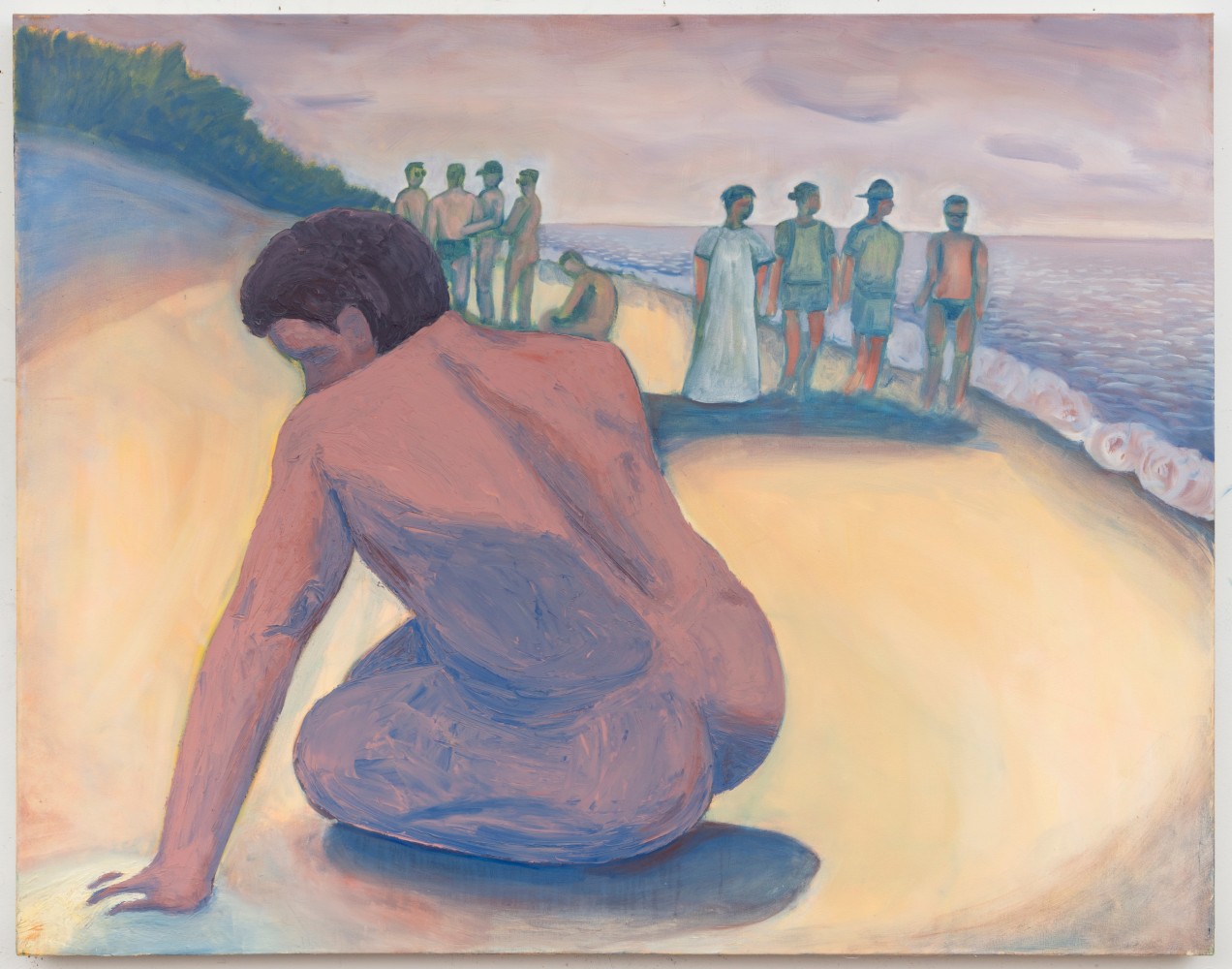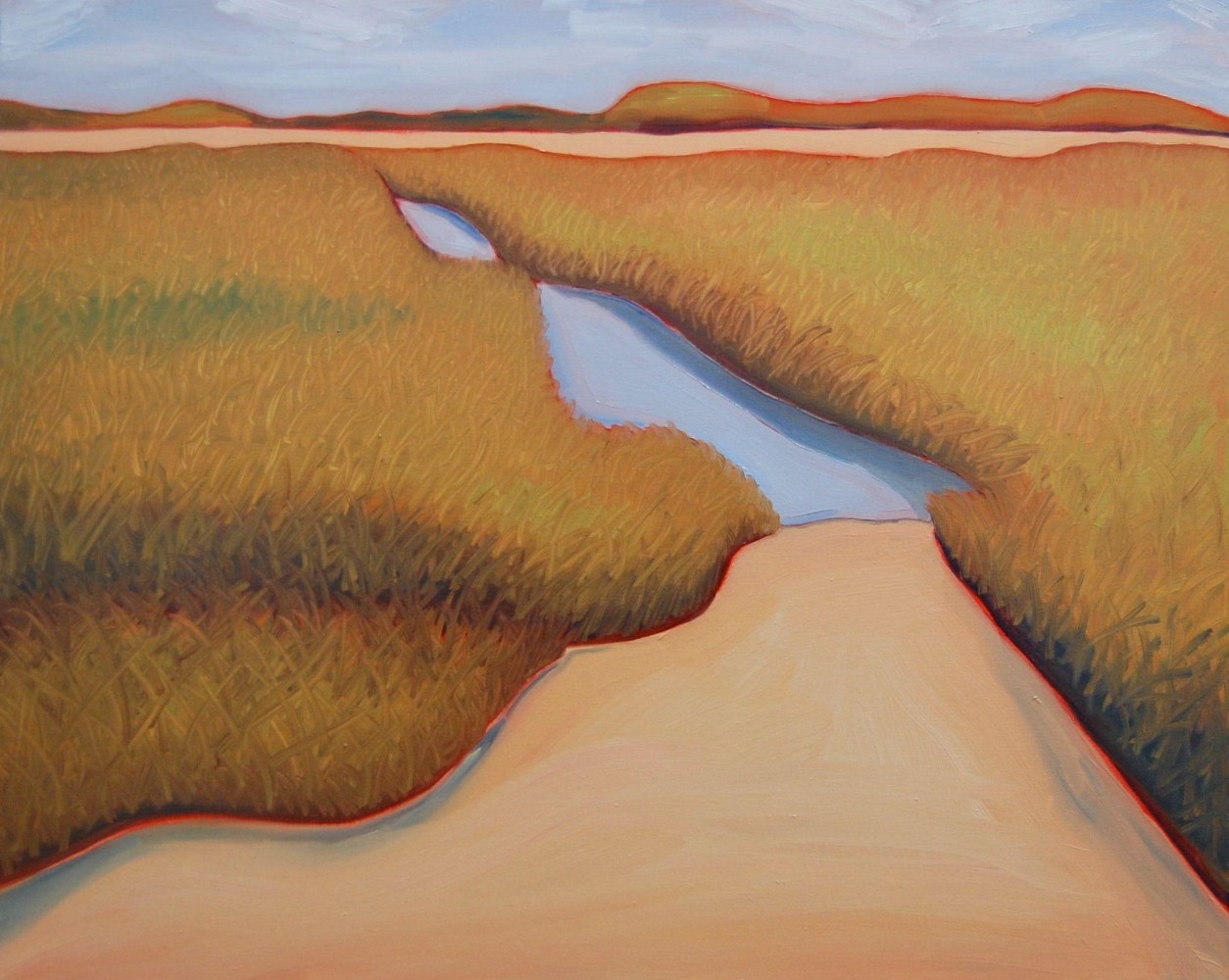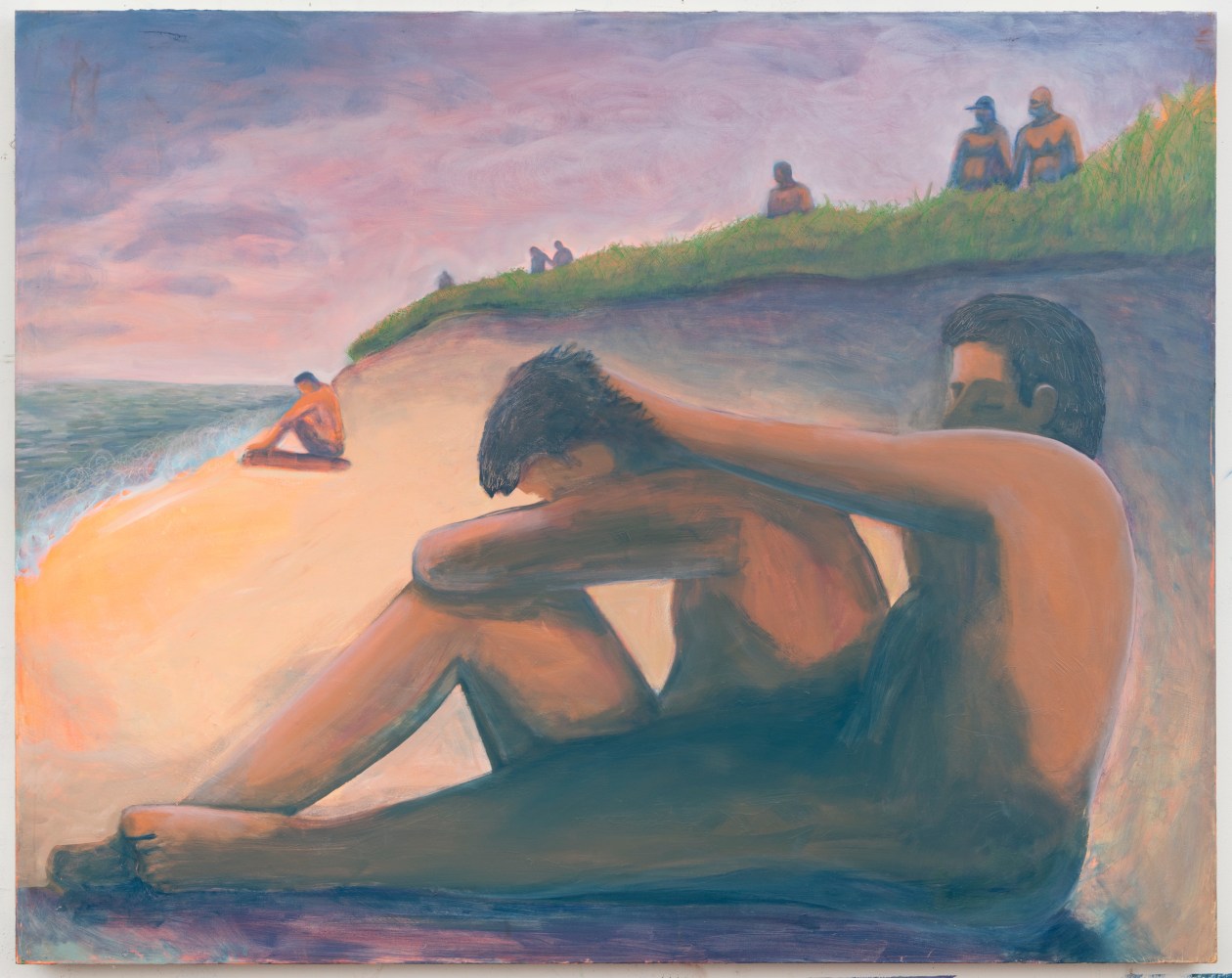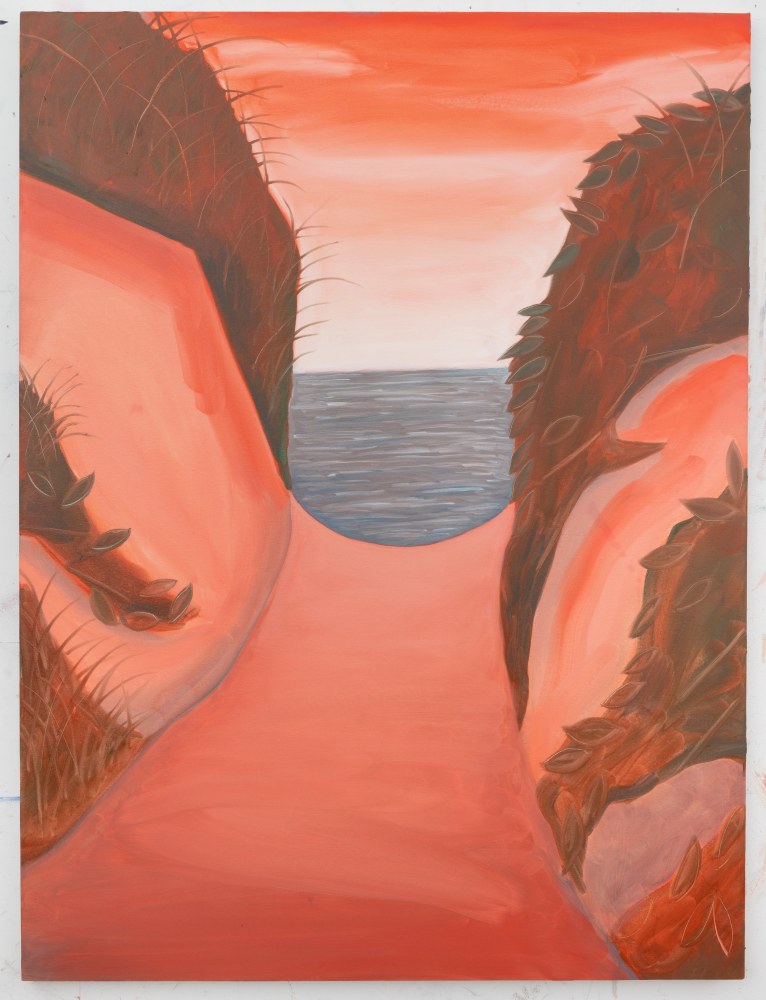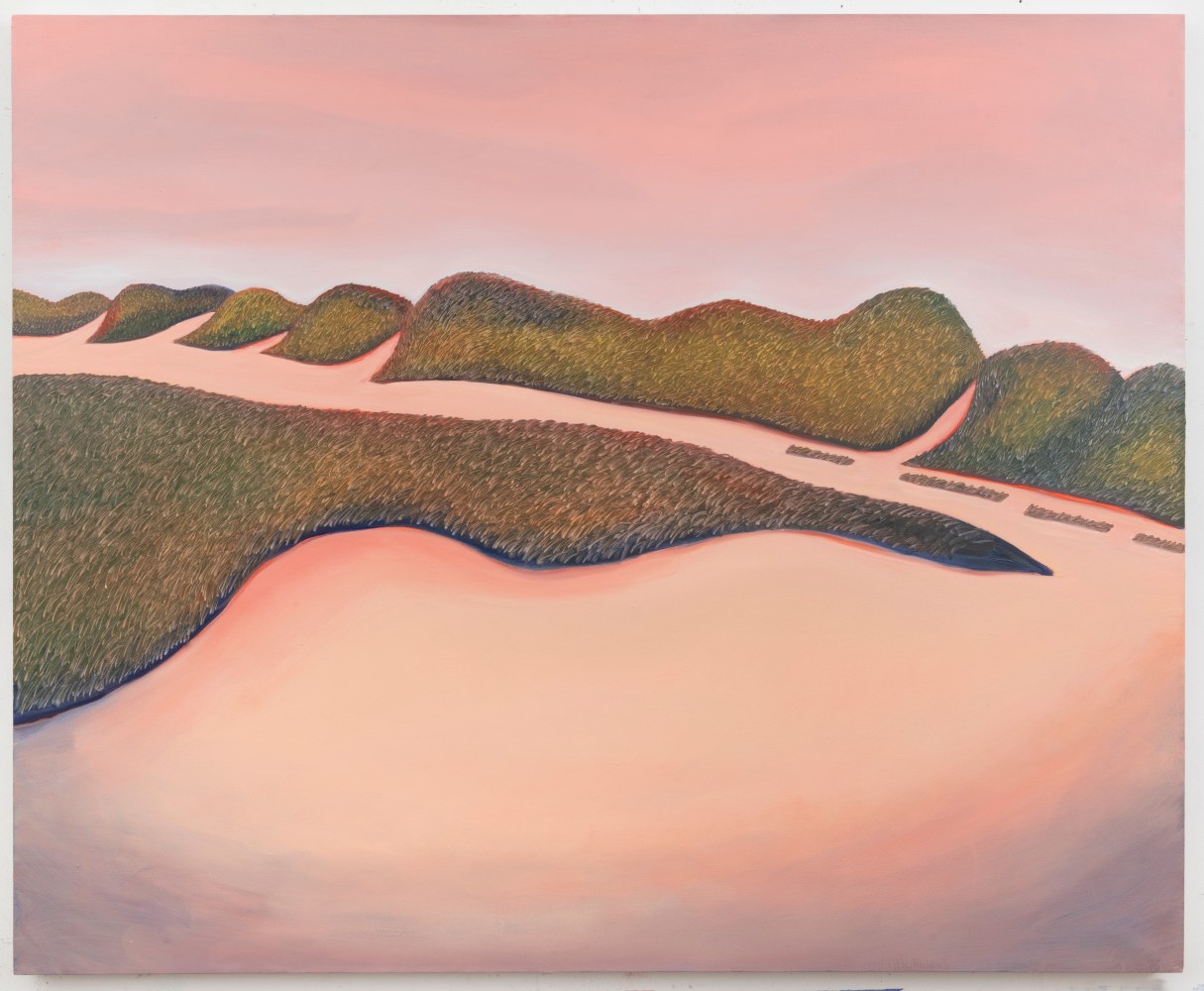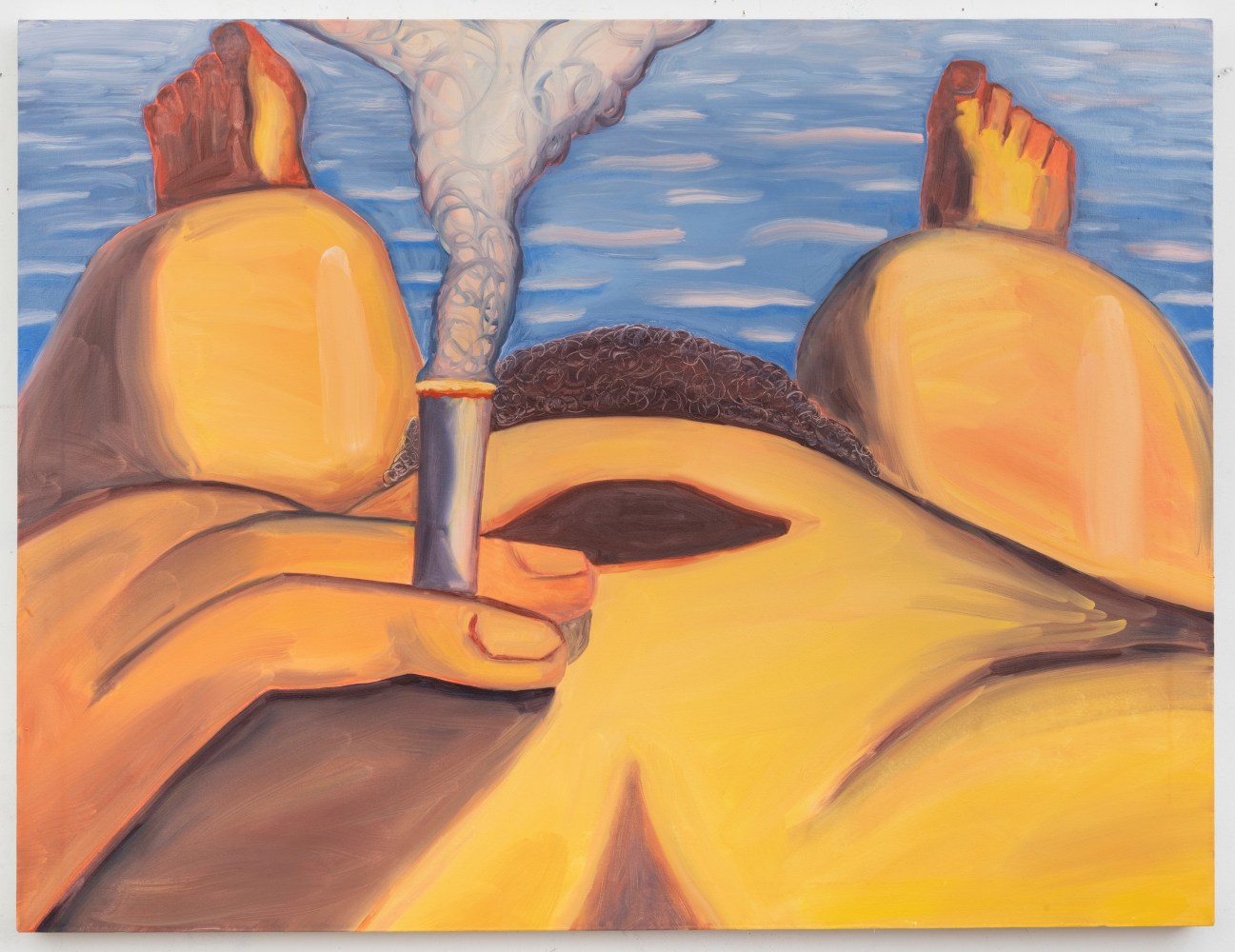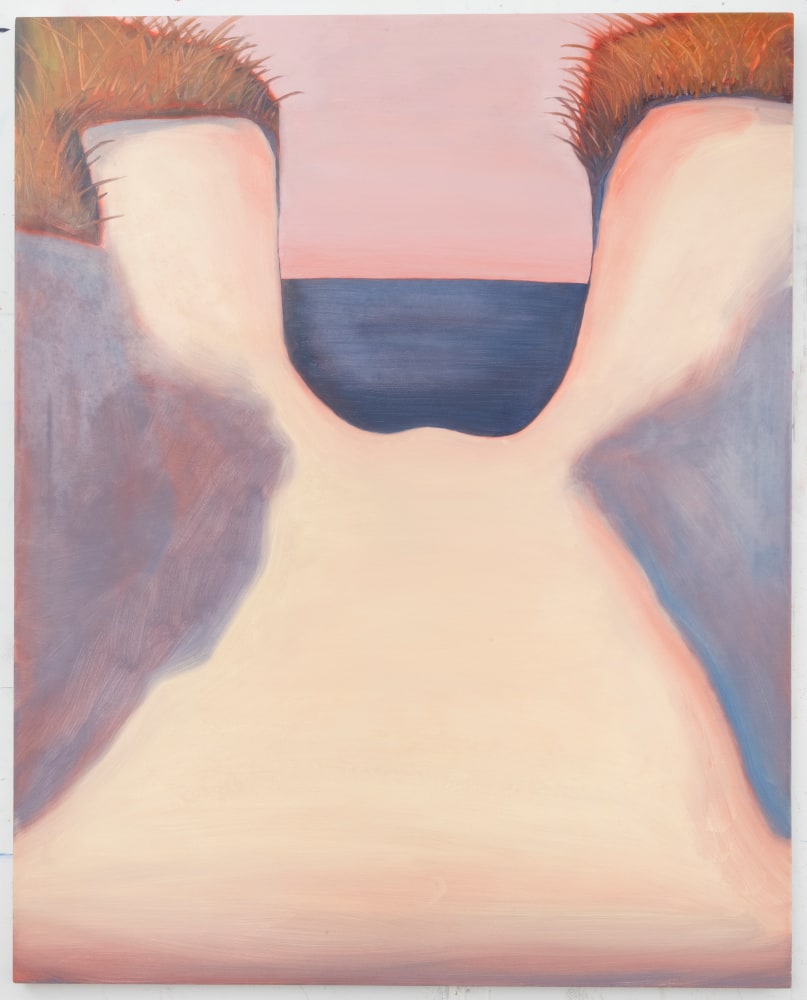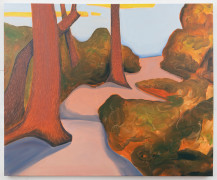
Dylan Hurwitz
Pathways: Herring Cove
January 21st - February 19th, 2022
Opening Reception: January 21st, 6-9pm
FOR IMMEDIATE RELEASE
Freight+Volume is thrilled to present Pathways: Herring Cove, a solo exhibition by Dylan Hurwitz, on view at 39 Lispenard St. from January 21st through February 19th, 2022. We will host a public reception on January 21st, 6-9pm.
Dylan Hurwitz's depictions of queer beach scenes radiate an intimacy which is transportive. Pathways—similar to neural connections, to the tracings of human bodies weaving through brush, or the face to face encounters which occur whenever you ask for directions to an unknown place—are Hurwitz's primary metaphors. The kind of utopian sociability specific to Herring Cove, Provincetown, for example, which constitutes the theme of his current exhibition, prefigures the range of expression that Hurwitz traces out in his paintings. Less portraits or landscapes than poetic dedications to Herring Cove, Hurwitz's most recent body of work celebrates the experience of loving touch between men, and the power of sex to forge new pathways of intimacy, care, and healing.
The removal of shame, and a certain joyousness in the space created by the body, is essential to this vision of queer community. Legs, pubic hairs, a visibly naked stomach—these are the signposts that often line the shore of Herring Cove. A kind of dialogue emerges where the bodies that inhabit this littoral climate take on a responsive shape in relation to their environment. As the viewer gazes through the legs of a stranger, these legs-become-monoliths are not less supple for becoming so perspectivally mountainous.
The seemingly massive scale of the body’s appendages, and the closeness of bodies generally—such that the viewer seems to inhabit their skin, smoking their joint, looking down at his own pubic hair as much as theirs—doesn’t in any way diminish the grandeur of the surrounding environment. The water, the beach, the sky—these elements are all given their due weight, and even retain their scale in relation to the nearness of the bodies presented. What Hurwitz's paintings introduce is an interconnectedness that places all the markers and delights of the body and queer sexuality on an equal plane with the environment in which they exist.
In this way, skin becomes a skein that weaves through the figurations of nature. Less like a memory, and more like the world-transforming pervasiveness of an epiphany, the contours of a walkway in a work like Blue Path, for instance, are imbued with the organicity of the human body. This winding pathway, stippled with sunlight, as well as footprints and detritus dropped from surrounding trees, is like a finger moving through a person's hair. Similarly, the structure in the distance visible through the branches (which could simply be a body of water) takes on a sexual allure, a phallic shape only partially concealed by a pubic beard of trees.
An essential feature of Hurwitz's vision of queer community is expressed by his use of foreshortening. Generally, this technique is used to create the illusion that an object is receding into a distant background. But the stomachs Hurwitz paints, as well as the pathways to Herring Cove that he has come to know so well, have a foreshortened aspect which serves to highlight their connectedness to the space around them. While a "straight" or conventional use of foreshortening might emphasize the separation of naked bodies and paths from the setting surrounding them, Hurwitz uses foreshortening to highlight a continuity between body, pathway, and environment. All of which creates a sense of anticipation and excitement, only partially concealed by an airy cloth of radical discretion.
Hurwitz's paintings of winding pathways introject into the consciousness of the viewer some kind of utopian promise. In either case, Hurwitz's work communicates with a warmth and vitality that appeals to this most universal layer of our collective psyche. As Pathways: Herring Cove illustrates, permissive sexual freedoms allow for a perception of nature (in both its inner and outer workings) that is less like regarding an object from without, and more like an experiential insight gained through the very fact of one's embodiment. This form of knowledge, where experience and possibility come into a momentary and momentous confluence, is what Hurwitz captures across the intimacy of each canvas.
Through Hurwitz’s haptic, beachy landscapes, and the fleshy semaphore of bodies he describes along the shores of Herring Cove, there is an attempt to preserve and protect queer space. Nature, in these paintings, becomes a stage for queer gathering and community, rather than an ambiguous moral order which violently overtakes our experience of love and expressivity.

